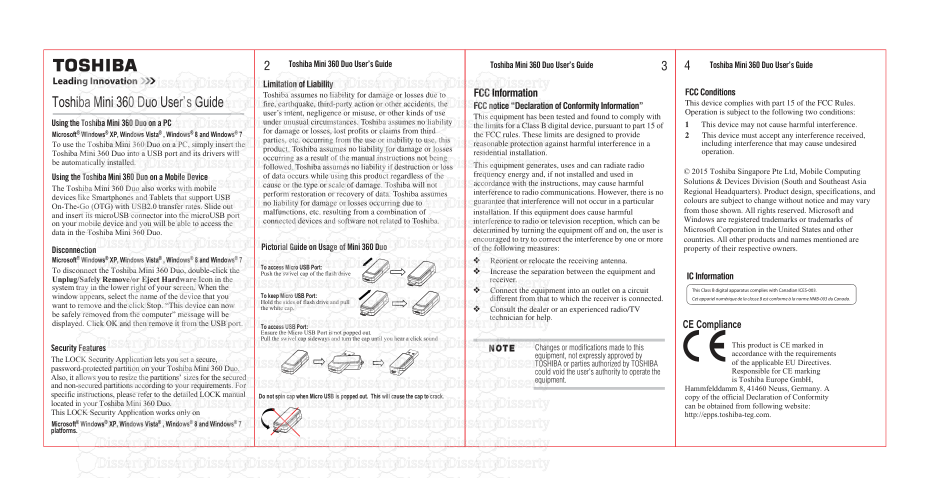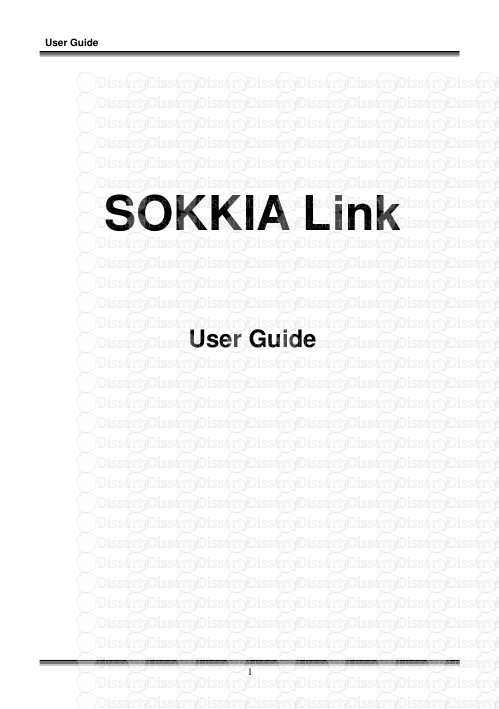*104160* *104160* Harvard (author-date) referencing guide January 2007 Harvard
*104160* *104160* Harvard (author-date) referencing guide January 2007 Harvard (author-date) referencing guide 2 Edition 2007 Produced and printed by the Division of Teaching & Learning Services Central Queensland University Rockhampton, Queensland. COMMONWEALTH OF AUSTRALIA Copyright Regulations 1969 WARNING This material has been reproduced and communicated to you by or on behalf of Central Queensland University pursuant to Part VB of the Copyright Act 1968 (the Act). The material in this communication may be subject to copyright under the Act. Any further reproduction or communication of this material by you may be the subject of copyright protection under the Act. Do not remove this notice. CQU CRICOS Codes: 00219C - Qld; 01315F - NSW; 01624D - Vic D E V E L O P E D B Y Academic Learning Support Division of Teaching and Learning Services Division of Teaching & Learning Services, Rockhampton, Queensland Australia Harvard (author-date) referencing guide 3 This is a referencing guide to the Harvard author-date referencing system. It is based on the following manual: Commonwealth of Australia 2002, Style manual for authors, editors and printers, 6th edn, rev. by Snooks & Co., John Wiley & Sons Australia, Brisbane. Copyright: Commonwealth of Australia reproduced by permission. This referencing guide has been written primarily for the use of students undertaking the preparatory course, STEPS, at Central Queensland University. At an undergraduate level, this document should be used for guidance only. Undergraduates should also consult their Study Guides and lecturers to find out which referencing conventions are preferred for their courses. Documents from the University of South Australia and the University of Adelaide provided the inspiration for the format of this referencing guide. This document can be found on CQU’s website. Open the CQU homepage http://www.cqu.edu.au/ click on students, then under the heading Tools for Students click on Referencing, then on Harvard (author-date). Harvard (author-date) referencing guide 4 Contents What is referencing? ..................................................................................................... 5 Why should you reference? .......................................................................................... 5 Should you reference public domain information? .................................................. 5 What is plagiarism and how can you avoid it? ............................................................. 7 Which referencing system should you use?.................................................................. 8 Principles of author-date referencing............................................................................ 8 Ways of citing............................................................................................................... 9 Paraphrasing................................................................................................................ 10 Paraphrase or use quotations? ................................................................................ 10 Using direct quotations ............................................................................................... 12 Page numbers.............................................................................................................. 15 Acronyms and initialisms ........................................................................................... 15 Difference between a reference list and a bibliography.............................................. 16 Features of the reference list....................................................................................... 17 Frequently asked questions (FAQs)............................................................................ 20 Harvard in-text and reference list models................................................................... 22 Quick guide to referencing models............................................................................. 23 Hard copy books ......................................................................................................... 25 Electronic books.......................................................................................................... 30 Hard copy journal articles........................................................................................... 31 Online or electronic journals....................................................................................... 32 Hardcopy—newspaper articles................................................................................... 32 Electronic copy—newspaper articles.......................................................................... 33 Other documents on the World Wide Web (WWW).................................................. 34 Government sponsored web sites................................................................................ 36 Hard copy government or legal documents ................................................................ 37 Hard copy university provided study materials .......................................................... 39 Electronic copy university provided study materials.................................................. 40 Specialised sources ..................................................................................................... 41 Evaluating web sites for educational use.................................................................... 45 Sample reference list................................................................................................... 46 Bibliography ............................................................................................................... 47 Index ........................................................................................................................... 48 Harvard (author-date) referencing guide 5 What is referencing? When you write an assignment at university, you are required to refer to the work of other authors. Each time you do so, it is necessary to identify their work by making reference to it— both in the text of your assignment and in a list at the end of your assignment. This practice of acknowledging authors is known as referencing. References must be provided whenever you use someone else’s opinions, theories, data or organisation of material. You need to reference information from books, articles, videos, computers, other print or electronic sources, and personal communications. A reference is required if you: • quote (use someone else’s exact words) • copy (use figures, tables or structure) • paraphrase (convert someone else’s ideas into your own words) • summarise (use a brief account of someone else’s ideas). Why should you reference? References enhance your writing and assist your reader by: • showing the breadth of your research • strengthening your academic argument • showing the reader the source of your information • allowing the reader to consult your sources independently • allowing the reader to verify your data. Should you reference public domain information? Public domain information is information that is so widely known that it is considered everybody would be aware of its source. The general public use public domain information freely. Where authors or sources are so widely known, specific citation may not be required. Check with your lecturer on this issue. For example: As Shakespeare observed, ‘All the world’s a stage …’ My notes: ....................................................................................................................... ......................................................................................................................................... ......................................................................................................................................... ......................................................................................................................................... ......................................................................................................................................... ......................................................................................................................................... ......................................................................................................................................... ......................................................................................................................................... Harvard (author-date) referencing guide 6 The quick guide to referencing Robert Harris designed this simple flowchart to assist students to cite their research properly. (Source: Harris 2001, p. 155) My notes:........................................................................................................................ ......................................................................................................................................... ......................................................................................................................................... ......................................................................................................................................... ......................................................................................................................................... ......................................................................................................................................... ......................................................................................................................................... ......................................................................................................................................... ......................................................................................................................................... ......................................................................................................................................... Harvard (author-date) referencing guide 7 (Source: Harris 2001, p. 158) These flowcharts can be found in Harris, R 2001, The plagiarism handbook: strategies for preventing, detecting and dealing with plagiarism, Pyrczak, Los Angeles. (These diagrams can be found on pages 155 & 158 of this text.) What is plagiarism and how can you avoid it? Plagiarism is the intentional use of someone else’s ideas, words or concepts in your assignment work. It is considered serious misconduct at University and should be avoided at all times. Central Queensland University (CQU) has a policy on plagiarism and you are strongly encouraged to familiarise yourself with it. The following URL will lead you to the plagiarism policy: http://policy.cqu.edu.au/Policy/policy.jsp?policyid=198 Committing plagiarism can carry very serious penalties for students, including expulsion from a university. (Note: Expulsion, for some international students, may mean having to return to their own country because this forfeits their student visa.) Regrettably, students have been known to commit offences of plagiarism by not understanding what acceptable paraphrasing, summarising or quoting techniques are. This is discussed later in this guide. The best way to avoid being accused of plagiarism is to acknowledge the resources upon which you have based your ideas. Harvard (author-date) referencing guide 8 Which referencing system should you use? There are a number of different referencing systems used in academic writing. CQU acknowledges: • author-date systems commonly known as Harvard and APA (American Psychological Association) • footnoting or endnoting systems commonly used in History and Law. It is important that you use the referencing system required by your lecturer for an assignment and maintain consistency in using that system. This guide explains the Harvard system of author-date referencing. The information it contains is based on: Commonwealth of Australia 2002, Style manual for authors, editors and printers, 6th edn, rev. by Snooks & Co., John Wiley & Sons Australia, Brisbane. Copyright: Commonwealth of Australia reproduced with permission. Principles of author-date referencing There are two parts to the author-date system of referencing. • the author and the date are referred to in the text or main body of your writing (called embedded or in-text referencing) • all of the resources referred to in the body of the writing are included in the reference list at the end of the assignment. All information is included in this list: author, date, title of publication, publisher and where it was published. The other features of author-date referencing include: • a specific order in which this information should be structured • the in-text reference which should be placed (cited) in such a way that it causes minimal disruption to the flow of your writing—this usually means at the very end or the very beginning of your sentences (see ways of citing below). When you cite sources of information in the text of your assignment—regardless of whether you quote, copy, paraphrase or summarise—you should include: • the author’s surname (family name) • the year of publication (latest edition) • page numbers when directly quoting or closely paraphrasing an author’s words/material • correct punctuation and spacing. Harvard (author-date) referencing guide 9 Ways of citing There are two ways of citing references: author prominent and information prominent. Author prominent This way gives prominence to the author by using the author’s surname (family name) as part of your sentence with the date and the page number in parentheses (round brackets). Direct quote example Cowie (1996, p. 91) argues that ‘socialism rejected the liberal ideals of individualism and competition’. Paraphrase example Cowie (1996) suggests that unlike capitalism, socialism promotes the good of the whole before the good of the individual. Information prominent The other way of citing references gives prominence to the information, with all the required referencing details in parentheses at the end of the citation. Direct quote example It has been argued that ‘socialism rejected the liberal ideals of individualism and competition’ (Cowie 1996, p. 91). Paraphrase example Unlike capitalism, socialism promotes the good of the whole before the good of the individual (Cowie 1996). Verbs that help with author-prominent referencing state point out describe remark add suggest maintain assert affirm agree claim clarify disagree contest contend highlight find show imply theorise offer predict uploads/Litterature/ harvard-guide 2 .pdf
Documents similaires










-
36
-
0
-
0
Licence et utilisation
Gratuit pour un usage personnel Attribution requise- Détails
- Publié le Mar 01, 2022
- Catégorie Literature / Litté...
- Langue French
- Taille du fichier 0.2220MB


